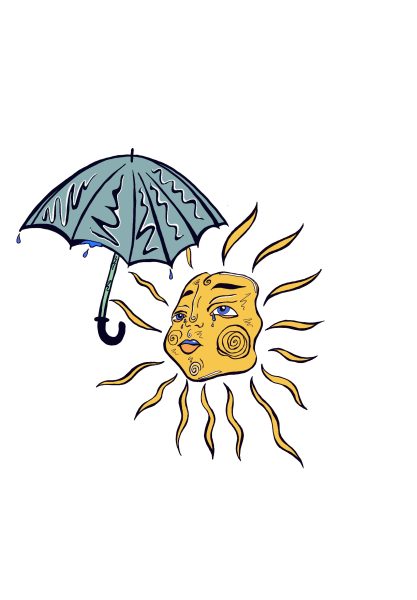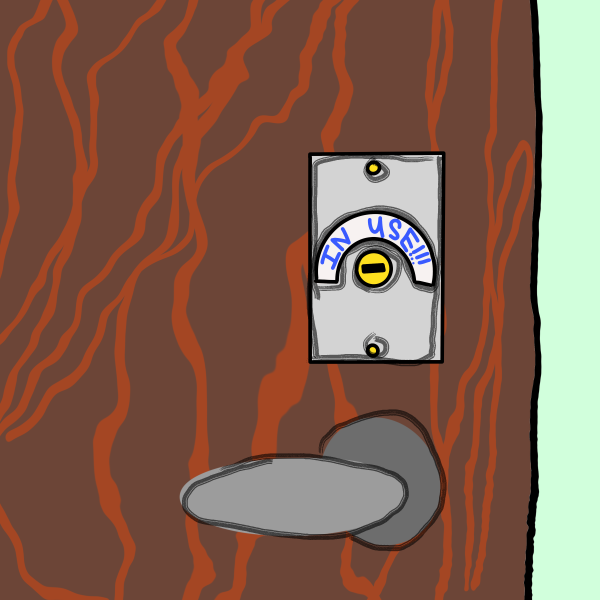It’s time to care about creepy crawlies
As bug populations continue to decline, it is becoming increasingly crucial to take action. It’s time to take the lead!
October 25, 2022
So, what is going on with bugs?
The high rates of insect mortality is alarming. I’m not even talking about the ones we squish beneath our tennis shoes or crush with a book. According to the research article, “Worldwide decline of the entomofauna: A review of its drivers,” our international local bug populations decline by 2.5% every year.
This has a huge impact on our future, and it is time to care about where our actions are taking us. Most insect population decline is caused by habitat loss and pesticide use. We can reverse this damage by restoring native ecosystems and habitats, reducing pesticide use, and mitigating climate change.
This is especially relevant here in the midwest, where our percentage is 1.5% higher than the global average (4% annual decline) as determined by the research article, “Meta-analysis reveals declines in terrestrial but increases in freshwater insect abundances.” It is within our power to make a difference, are we ready?
Why should we care about insects?
Etymologists and bug enthusiasts can agree that bugs are cool just in the ways insects exist on this planet, but many other people disagree and are even deeply grossed out by “creepy crawlies.” Why should people care if bug populations are declining?
Saprophagous, or insects consuming dead matter, process organic waste from dead plants and animals. Imagine a world where things were left to decompose without being recycled back into the soil over time. Now that’s gross. Organic waste is processed by bugs and turned into fertilizer that feeds plants. Bug-produced fertilizer is a great alternative to our nitrogen-heavy fertilizers that leak into water sources and cause algae blooms that suffocate fish.
While keeping water quality consistent, insects are also a reliable food source throughout many ecosystems, terrestrial and aquatic! Mayfly swarms are a crucial food source for all kinds of wildlife: birds, bats and fish, just to name a few. A research article published in The Proceedings of the National Academy of Sciences (PNAS) finds that the burrowing mayfly population has declined by over 50% between 2012 and 2019 in the upper Mississippi Basin and Lake Erie. That is us; we are the upper Mississippi Basin. That is 50% fewer burrowing mayflies feeding the rest of our ecosystem. Without collective community action, we contribute to continuous population decline, and this will have permanent impacts on our planet.
According to a National Public Radio (NPR) report from February, some countries such as China have suffered such a loss in bug populations that agricultural pollination is done by human hands. Without our bees, that is the fate we are signing up for. Bees have been noted for their declining and threatened populations, and Minnesota is not safe from this statistic. The rusty patched bumblebee, a Minnesota state-designated bee, has been listed as an endangered species since 2017.
What about pretty pollinators? The migrating monarch butterfly, the state butterfly of Minnesota, was added as an endangered species earlier this year. The population loss is estimated to have started at 22% in the past 10 years; many scientists believe the number is much higher. The monarch butterfly is just one of the many butterfly species in Minnesota that are endangered.
Other endangered native Minnesota butterfly species include the dakota skipper and poweshiek skipperling; the Minnesota Zoo is currently hard at work to restore these species, and we can help.
The karner blue butterflies are fascinating butterflies with a unique evolutionary trait; caterpillars secrete a liquid with sugars and amino acids to feed ants in return for protection against predators. Karner blue butterflies are another beautiful species that are endangered in Minnesota, this is due to habitat loss across the northern United States.
When you stand in a rural field in the middle of the summer, the small flickering lights in the air seem so magical, but it’s not magic, those are lightning bugs. Many of us have fond memories of collecting fireflies in jars throughout our childhood, even as adults. This awesome bioluminescent beetle is endangered; without combined intervention efforts, people in the future will never be allowed to experience them.
What is killing off the insects?
Habitat loss is a huge contributor to insect population loss. Butterflies such as the monarch and dakota skipper rely on prairie ecosystems to live; 33% of Minnesota’s native ecosystem was prairies, and only 1% is left. Many insects relied on prairie habitats to reproduce, grow and live, and the loss of native grasslands contributes to mass die-offs.
Native ecosystems are also necessary to provide an adequate nighttime environment for fireflies; as farming and urban development expanded to meet human needs, native habitats and light pollutants have contributed to firefly die-offs. Why do artificial lights harm fireflies? Fireflies use their bright abdomens to signal to mates; without the ability to see potential mates, fireflies cannot mate. Terrestrial ecosystems are not the only important habitats worth our attention, water also provides a necessary ecosystem for our insects.
Twin Cities residents often agree that the Mississippi River is “nasty,” and you would not want to fish here. Minnesota is the state that births the Mississippi River, so we can’t put this blame on anyone else.
According to the Minnesota Pollution Control Agency, 40% of Minnesota’s water fails to meet health standards. Through political action and ecological restoration work, we can make a dent in these statistics. Sometimes erosion just happens, but human activity during urban and farm development has exacerbated the damage, and one such process is the destruction of native wetlands. According to the Minnesota DNR, 95% of wetlands in southern and western Minnesota were destroyed in the process of “developing” the land.
Pesticides often kill more than just their target audience, they harm our native ecosystems. When you spray your yard for mosquitoes or use neonicotinoid pesticides, this impacts bees, butterflies and other species of native insects.
Neonicotinoid pesticides, also known as neonics, impact the central nervous system of insects and kill them, or harm their ability to reproduce. A PBS article from 2017, reports that neonics are commonly used for agricultural use and often end up in our water. Much of the time, this pesticide is in the pollen of plants that were not sprayed with neonics in the first place! By reducing our reliance on pesticides such as neonicotinoids, we can reduce this cross-contamination and save bee colonies from collapse.
A research article from the National Library of Medicine confirms that neonics in the water also impact the mayfly population. Mayfly larva grows in the water, and are very sensitive to pesticides and fertilizers and when the water is contaminated with neonicotinoids, they die.
A governmental study performed in 2015 by the bureau of the United States Department of the Interior found neonicotinoid contamination in at least 53% of samples collected in water throughout the United States.
YIKES, this is a problem worth our attention. There are other mitigating factors of course, algal blooms and decreased water quality are also credited for decreased mayfly hatching populations in the upper Mississippi Basin as mentioned by a previously noted article. Another article from PBS also names pesticide use as “the third most serious threat to fireflies globally.” This damage is caused directly by human action, so it is on us to do right.
We messed up. How do we fix it?
Let’s ask ourselves, what happens without our tiny neighbors? When a species goes extinct they do not come back; that causes permanent damage to our ecosystems and planet. That is why we should take action now. Minnesota is important for preserving ecosystems and saving these declining bug populations.
Habitat loss is one of the leading causes of insect population declines, restoring native ecosystems is one of the most crucial actions we can take to turn the tables and protect endangered species.
Many insects rely on “host plants” because they evolved to rely on them. Karner blue butterflies rely on wild lupine as a host plant because it is the only food source for their larvae and caterpillars, and is where they lay their larva.
Monarch larvae only feed on a variety of milkweed plants (prairie and swamp milkweed, butterfly weed), and we can easily plant them in our yards.
There are many organizations available to provide plant and native landscape-specific resources. The Minnesota Zoo website features information about what plants are good for pollinators on their website. A local nonprofit organization, Wild Ones: Natural Landscapers, also provides educational resources and volunteer opportunities throughout the community.
You do not need to pursue a biology major to get involved. Members of these organizations are more than happy to educate you at every level. The Minnesota DNR also features a Prairie Conservation Plan, which provides a framework of spaces most in need of prairie ecosystem restoration.
Restoration of native wetland ecosystems can play a huge role in addressing our water quality in Minnesota because wetlands filter sediment, pollutants and reduce erosion. A problem in central Minnesota and the Metro area is invasive species moving in. There are many nonprofit and government agencies in the process of addressing these problems, and getting involved with these pre-established organizations will be the easiest way to get involved in the work that needs to be done.
The Minnesota DNR also has a Restorable Wetland Prioritization Tool to refer to when determining areas requiring the most need for volunteers. Aside from political action, this is a great way to get personally involved in addressing Minnesota water quality and protecting bug larvae to ensure larger hatches next summer. Through efforts, big or small, we can all do our part to provide relief to our insect populations and foster native biodiversity
Pesticides have soaked into our soil and contaminated our water, but this would have never happened if we just controlled our reliance on pesticides in the first place. We can’t turn back time, so the important part is being mindful of this issue in the future.






Aurora • Oct 25, 2022 at 2:58 pm
What a thoughtful and well-written article! I am so glad to see someone helping to educate and encourage action on such an important topic. ??? The article was so thoroughly researched and supported too… Truly a great read from a passionate and talented journalist.